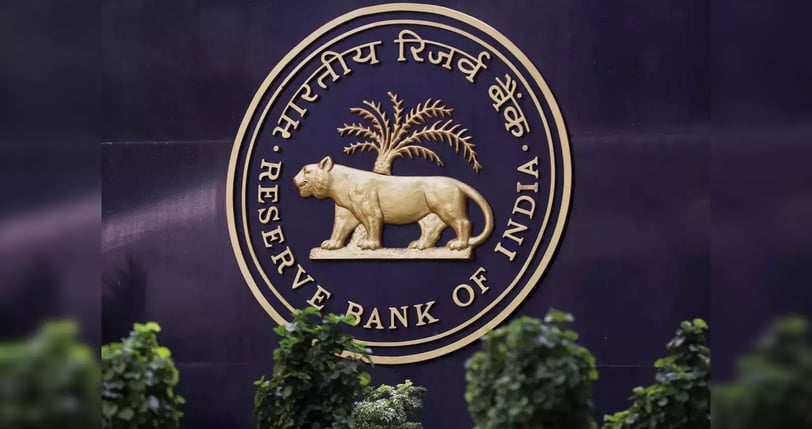Add your promotional text...
Monetary Policy at a Crossroads: Why the RBI Must Tread Carefully
Synopsis: Indian markets are eagerly anticipating a monetary policy shift, with expectations of rate cuts and liquidity assurances. While a rate cut is justified by macroeconomic conditions, a full-fledged dovish stance could have unintended consequences, particularly for the rupee and inflation. The RBI must strike a balance—addressing growth concerns while maintaining financial stability.
VIEWS ON NEWS
By Monika Agarwal
2/6/20253 min read


The Markets’ Clamor for More
Indian markets are in an Oliver Twist mode, eagerly demanding more from the Reserve Bank of India (RBI) in the upcoming monetary policy announcement. A significant majority of market participants expect a reduction in the repo rate, while some are also eyeing a cut in the Cash Reserve Ratio (CRR). Additionally, traders and bankers want the RBI to provide reassurances on liquidity, express comfort with the falling credit-deposit ratio, and defer new regulatory frameworks on liquidity coverage, expected credit loss, and project financing. In essence, the market’s plea is for broad-based dovishness to counteract economic sluggishness.
While certain easing measures are merited, an all-encompassing policy pivot could be premature and even detrimental.
Macro Conditions Justify a Rate Cut
The economic backdrop has changed significantly since the RBI’s last policy meeting in December. Back then, the central bank faced a headline Consumer Price Index (CPI) inflation of 6.22%, exceeding the mandated 2-6% target range. However, inflation has since softened, with CPI falling to 5.2% in December and projected to decline further to 4.5% in January. Forecasts suggest that inflation will remain in the 4-4.5% range until September and could dip as low as 3.5% in the final quarter of 2025.
This downward inflation trajectory has strengthened the case for a repo rate cut from 6.5% to 6.25%, a move widely anticipated by market watchers and likely to be delivered by the Monetary Policy Committee (MPC).
Economic Pressures Make the Rate Cut Necessary
Beyond inflation, economic indicators further bolster the need for monetary easing. India’s GDP growth rate for the second quarter stood at a modest 5.4%, and subsequent indicators have signaled subdued recovery.
Car sales of top manufacturers rose by only 1.8% in January 2025.
The services PMI declined to a two-year low of 56.5 from 59.3 in December.
Several consumer goods companies, including Asian Paints, Symphony, Dabur, and Greenlam, reported low single-digit growth in the December quarter.
Non-banking financial companies (NBFCs), facing slower loan growth, are pushing for a rollback of the 125% risk weight on bank loans imposed in 2023.
These factors indicate that a rate cut could provide the necessary stimulus to revitalize economic momentum.
A Wobbly Rupee: The Primary Counterargument
The biggest concern surrounding a rate cut is its potential impact on the rupee. The Indian currency has experienced an accelerated decline in recent weeks. While the rupee depreciated by 1.2% over ten months in 2024, it dropped by the same amount in just five days from February 1 to February 5, 2025.
Some economists argue that India’s attractiveness for foreign investors lies in its growth story rather than interest rate differentials. However, at a time when the rupee is already under pressure, a rate cut and liquidity expansion could trigger further speculative selling and worsen depreciation.
Liquidity Assurances: A Slippery Slope
The market also seeks assurances on ample liquidity, but the RBI must be cautious. The global economic landscape remains volatile, with trade tensions escalating. The worst of the rupee’s depreciation may not be behind us, and excessive liquidity promises could exacerbate instability.
Moreover, inflation concerns persist. The RBI had initially projected CPI inflation at 4.3% for FY25 but revised it to 4.8% by October. Food inflation remains a wild card, with the potential to spill over into wage inflation, especially given the government’s fiscal stimulus measures. Thus, the RBI cannot afford to be overly dovish.
Regulatory Reforms: Proceed with Caution
Markets are also keen to hear the RBI’s stance on new regulatory measures, particularly the Liquidity Coverage Ratio (LCR), Expected Credit Loss (ECL) norms, and stricter provisioning for project finance. These reforms, while essential for long-term financial stability, impose additional capital requirements on banks.
It is likely that the RBI will signal a delay in implementing these regulations. Structural financial reforms are best introduced during stable times, not when the currency is under pressure and growth is sluggish.
Striking the Right Balance
In conclusion, the RBI is expected to deliver a repo rate cut, and possibly even announce a CRR cut or other liquidity-enhancing measures. However, it must resist the temptation to provide overly dovish assurances.
The central bank’s challenge is to navigate between supporting economic growth and ensuring financial stability. A rate cut is justified, but a full-scale pivot—marked by excessive liquidity expansion and regulatory rollbacks—could do more harm than good. The RBI must take a measured approach, ensuring that policy decisions bolster confidence without undermining macroeconomic resilience.
